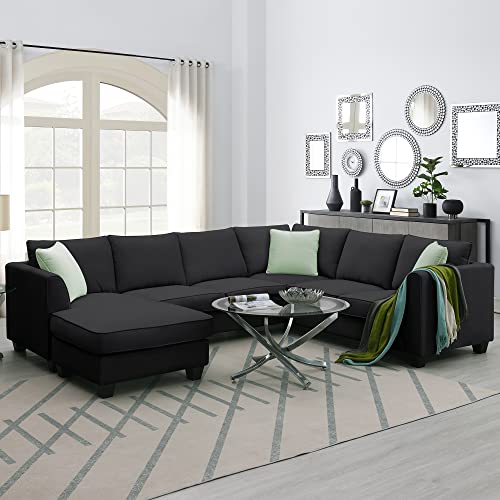Understanding Traditional Sofas: A Timeless Comfort
In the realm of home decoration, traditional sofas hold an unique location. Sofas And Couches created pieces use not simply convenience however likewise a visual that complements a large range of interior styles. From timeless designs to intricate workmanship, traditional sofas represent a delightful mix of history and performance.
What Defines a Traditional Sofa?
Traditional sofas frequently draw inspiration from historical style elements, typically featuring lush upholstery, ornate details, and a general air of sophistication. These pieces vary in design, however they typically share a number of crucial qualities:
- Classic Silhouettes: Traditional sofas often boast curved lines, rolled arms, and tufted backs.
- Rich Fabrics: Upholstery made from high-quality materials such as velour, silk, or brocade prevails, with patterns varying from florals to damask.
- Intricate Details: Carved wood legs, nailhead trim, and fringe information frequently decorate these pieces, emphasizing their creative workmanship.
- Comfort-Centric Design: Beyond aesthetics, these sofas are designed for convenience, including well-padded cushions and supportive frames.
Below is a table summarizing the key features of traditional sofas:
| Feature | Description |
|---|---|
| Shape | Curved lines, rolled arms, and tufted backs |
| Fabric | High-quality products like velour and silk |
| Information | Sculpted wood, nailhead trim, detailed patterns |
| Convenience | Well-padded cushions and supportive structures |
Popular Styles of Traditional Sofas
Traditional sofas can be found in numerous styles, each boasting its special history and charm. Here are some of the most acknowledged styles:
1. Chesterfield Sofa
Defined by its deep button-tufting and rolled arms, the Chesterfield sofa is an icon of elegance. It is often upholstered in leather, making it a staple in sophisticated settings.
2. Camelback Sofa
The Camelback sofa features a distinct arch in its backrest that looks like a camel's bulge. This design includes a component of visual interest to any living room.
3. Lawson Sofa
Known for its boxy shape and loose cushions, the Lawson sofa focuses on convenience without compromising on design. It's frequently decorated with classic patterns or simple fabrics.
4. Tuxedo Sofa
The Tuxedo sofa has straight arms that are the very same height as the back, offering a streamlined, tailored appearance. It's ideal for modern homes that still appreciate traditional touches.
5. Sofa
This smaller sized, two- or three-person sofa typically works as an accent piece. Its shorter length and fragile design make it ideal for corridors or small living areas.
Here's a fast recommendation table to assist picture these styles:
| Style | Qualities | Ideal For |
|---|---|---|
| Chesterfield | Deep button-tufting, rolled arms | Classy interiors, official settings |
| Camelback | Arching back-rest | Traditional or diverse decoration |
| Lawson | Boxy shape, loose cushions | Cozy living spaces |
| Tuxedo | Straight arms, equal height with back | Modern develops with traditional flair |
| Sofa | Smaller sized size, fragile style | Small spaces |
The Advantages of Traditional Sofas
Investing in a traditional sofa offers numerous benefits, that include:
- Timeless Appeal: The timeless styles ensure that these sofas never go out of design, making them a long-lasting furniture investment.
- Versatility: Traditional sofas can mix seamlessly with different decor styles, from contemporary to vintage.
- Quality Craftsmanship: Many traditional sofas are made from high-quality products, making sure resilience and durability.
- Convenience: Generously padded and created for relaxation, they offer a cozy spot for friends and family.
Taking care of Your Traditional Sofa
To ensure that your traditional sofa preserves its appeal for many years, appropriate care is important. Here are some important upkeep tips:
1. Routine Cleaning
Dusting and vacuuming the sofa frequently will help keep it tidy. Use a soft brush to avoid harming the fabric.
2. Prevent Direct Sunlight
To prevent fading, position your sofa away from direct sunlight. Consider window treatments that can protect it from harsh rays.
3. Area Cleaning
For spills, address them immediately utilizing a clean, absorbent cloth. Test cleansing solutions on a small surprise area to make sure compatibility with the fabric.
4. Professional Upholstery Cleaning
Think about scheduling expert upholstery cleansing every few years to renew the fabric and preserve its vibrancy.
5. Air Out the Sofa
Occasionally, give your sofa space to breathe. Get rid of cushions and vacuum beneath to prevent dust build-up.
Often Asked Questions (FAQs)
Q1: How do I choose the right size traditional sofa for my living space?A1: Measure your space before shopping. Consider entrances, hallways, and the overall layout of the room to guarantee a correct fit. Generally, a sofa ought to enable sufficient walking space around it. Q2: What fabrics are best for traditional
sofas?A2: Fabrics like velvet, silk, and high-quality cotton
are frequently utilized for traditional sofas. They use charm and durability, though they might need specific care. Q3: Are traditional sofas ideal for small spaces?A3: Absolutely! Try to find loveseat or sofa styles that offer traditional charm without overwhelming your area. Q4: How do I know if a traditional sofa is well-constructed? A4: Check for a durable frame made from wood, high-density foam cushions, and a weight that suggests quality materials. Avoid sofas that are too light-weight as they may lack sturdiness. Traditional sofas embody an elegance that enhances any living space while offering comfort and inviting relaxation. With a range of styles readily available
, choosing the ideal traditional sofa can develop an ageless focal point in your home. By comprehending the characteristics, styles, advantages, and upkeep of these timeless pieces, you can make an educated choice that will serve both type and function for many years to come.

